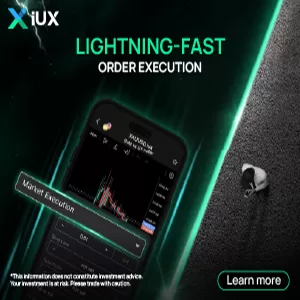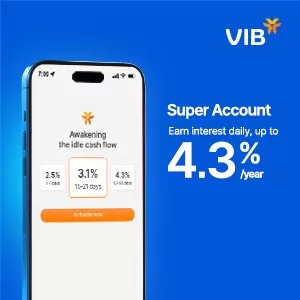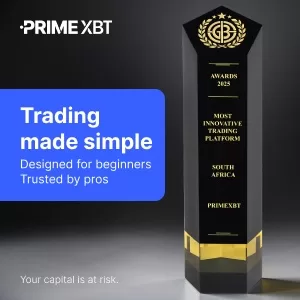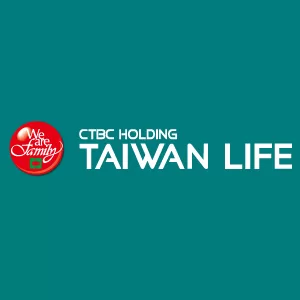Technology
How Do Blockchain Projects Raise Money: A Guide for Beginner Investors

In recent years, the blockchain industry has experienced tremendous growth, drawing in both seasoned investors and curious newcomers as the market continues to expand. Aspiring entrepreneurs are launching blockchain-based ventures across diverse sectors—such as finance, gaming, and supply chain—which raises the question: How do these projects secure the capital they need to thrive? Suppose you’re a beginner investor seeking answers. In that case, this guide will walk you through the most common blockchain and Web3 fundraising methods, ensuring you gain insight into these projects’ strategies and the considerations you should consider before investing. By the end, you’ll have a clearer picture of blockchain ventures’ pathways to raise funds and how you can best navigate those opportunities.
Initial Coin Offerings (ICOs)
What Is an ICO?
An Initial Coin Offering (ICO) is one of the earliest and most well-known blockchain crowdfunding methods. It’s often compared to an Initial Public Offering (IPO) in traditional finance. However, instead of selling shares, the project issues digital tokens that buyers can purchase using cryptocurrencies like Bitcoin or Ethereum. These tokens may offer various utilities within the project’s ecosystem, such as payment for services, governance rights, or access to platform-specific features.
The ICO Process
When a project decides to conduct an ICO, it typically publishes a whitepaper detailing its goals, roadmap, token economics, and the problem it aims to solve. Investors review this whitepaper to gauge the project’s viability. During the ICO phase, participants send funds to a designated wallet in exchange for the project’s newly minted tokens. Once the ICO concludes, the project can use the raised capital to develop its platform, market its solutions, or expand its team.
Pros and Cons of ICOs
ICOs gained massive popularity in 2017 and 2018 because they lowered the entry barriers for investors and entrepreneurs. This meant higher accessibility and less regulatory oversight, leading to the rise of scams and “rug pulls.” Today, many countries have implemented stricter regulations around ICOs to protect investors. ICOs can be a powerful way to attract global funding for legitimate projects. For investors, thorough research—often called DYOR (Do Your Own Research)—is crucial.
Initial Exchange Offerings (IEOs)
How Do IEOs Differ from ICOs?
An Initial Exchange Offering (IEO) is similar to an ICO but involves a centralized cryptocurrency exchange acting as an intermediary. Instead of hosting the token sale on their websites, projects collaborate with an exchange, which lists the new token for sale to its user base. After the sale, the token often gets automatically listed on the same exchange, ensuring liquidity.
The Advantages of IEOs
The primary advantage of IEO for projects is the built-in user base and credibility from partnering with a reputable exchange. Investors may feel more secure participating in an IEO because the exchange typically vets the project, reducing the likelihood of scams. In addition, the token’s immediate listing on the exchange can provide early liquidity and price discovery.
Potential Drawbacks
Because IEOs rely on centralized platforms, they can conflict with the decentralized ethos of blockchain. Projects often pay hefty fees to the exchange for hosting their sale. Moreover, smaller investors may face stricter Know Your Customer (KYC) and geographic restrictions. Despite these downsides, IEOs remain popular due to their convenience and lower perceived risk compared to an unregulated ICO.
Security Token Offerings (STOs)
What Makes STOs Different?
Security Token Offerings (STOs) involve issuing tokens that are considered securities under financial regulations. These tokens can represent equity in a company, a share of future profits, or even real-world assets like real estate. Because these tokens are treated as securities, STOs typically operate under stricter legal guidelines, making them more appealing to investors who prefer a regulated environment.
Why STOs Appeal to Investors
One of the main draws of STOs is their regulatory compliance. By adhering to securities laws, projects can attract more conservative or institutional investors, providing an additional layer of trust and legitimacy. STOs also open the door to asset-backed tokens, which can diversify an investor’s portfolio beyond utility tokens.
Challenges with STOs
Compliance with securities regulations can be expensive and time-consuming. Projects must navigate different jurisdictions, perform due diligence, and often limit their offerings to accredited investors. These requirements can reduce the number of potential participants, making STOs more exclusive compared to ICOs or IEOs. Nonetheless, many experts believe STOs are a key step toward the mainstream adoption of tokenized assets.
Initial DEX Offerings (IDOs)
Decentralized Fundraising Explained
An Initial DEX Offering (IDO) is the decentralized counterpart to an IEO. In an IDO, tokens are offered directly to the public via a decentralized exchange (DEX). Instead of relying on a centralized exchange to host the sale, projects leverage automated smart contracts and liquidity pools on blockchain networks like Ethereum, Binance Smart Chain, or Solana.
Benefits of IDOs
Since IDOs run on decentralized protocols, they generally have fewer barriers to entry. Anyone with a compatible crypto wallet can participate, which aligns with the spirit of decentralized finance. Liquidity is also established instantly through decentralized liquidity pools, allowing trading to begin immediately after the offering concludes.
Risks to Keep in Mind
While IDOs can democratize fundraising, they come with risks. The free and open nature of decentralized platforms can attract malicious actors. Price volatility can be extreme when a token is first listed, and decentralized exchanges don’t always have the same thorough vetting processes as centralized exchanges. As always, thorough and comprehensive research and caution are advised.
Venture Capital (VC) and Angel Investors
Traditional Funding Meets Blockchain
Not all blockchain projects rely on public crowdfunding. Many turn to traditional sources of capital, such as venture capital firms and angel investors. These investors provide large amounts of funding in exchange for equity, tokens, or a combination of both. Well-known VC firms have dedicated cryptocurrency funds to back promising blockchain startups.
Advantages of VC Funding
Venture capitalists can offer more than just money—they often bring strategic guidance, industry connections, and operational expertise. This can be invaluable, especially for founders who need to navigate the complexities of blockchain technology, regulation, and rapid growth.
Potential Downsides
Securing VC funding typically requires founders to give up some control or ownership in their projects. This can conflict with the decentralized ethos of blockchain, where community governance is highly valued. Additionally, VCs might push for profit-driven choices, which can shift the project’s focus away from community-centric objectives.
Grants and Accelerator Programs
The Role of Grants
Blockchain networks like Ethereum, Polkadot, and others often have grant programs to support development within their ecosystems. These grants can be ideal for open-source projects that aim to enhance the broader blockchain infrastructure. The funds usually don’t require equity or tokens, making them a more neutral source of capital.
Types of Accelerator Programs
Accelerators are structured programs that provide startups with mentorship, resources, and funding in exchange for a small stake in the business or tokens. They often last a few months and give founders access to industry experts, networking opportunities, and investor pitch events. Well-known blockchain accelerators can fast-track a project’s growth and legitimacy.
Why Grants and Accelerators Matter
Both grants and accelerators serve as catalysts for innovation. They can help early-stage projects get off the ground without immediately resorting to public crowdfunding or major equity sales. This can be particularly beneficial for developers who wish to keep community ownership intact while still receiving the financial boost to build, test, and refine their products.
NFT Sales as a Fundraising Tool
From Digital Art to Project Funding
Non-Fungible Tokens (NFTs) have exploded in popularity, evolving from niche digital collectibles into versatile fundraising tools. Projects can create NFTs representing memberships, access passes, or special privileges within their ecosystem. This allows the team to raise funds while rewarding early supporters with unique, tradable assets.
Community Engagement via NFTs
NFTs can foster a strong sense of community. When supporters own exclusive digital assets, they feel a deeper connection to the project. These tokens can also unlock special perks like private Discord channels, early product trials, or governance voting rights. The shared excitement around NFT collections can boost a project’s brand and visibility.
The Caveat: Volatility
NFT prices can be highly volatile, often driven by hype or speculation. Moreover, not all NFT initiatives succeed, and some may lack real-world utility. As an investor, you should explore the project’s underlying fundamentals and its NFTs’ potential use cases. If the NFTs have genuine value and align with the project’s long-term vision, they can be an exciting way to support blockchain innovation.
Key Considerations for Beginner Investors
Conduct Thorough Research (DYOR)
Regardless of the fundraising model—ICO, IEO, STO, IDO, or otherwise—your first step should be doing research. Read the whitepaper, review the roadmap, check the credibility of the founding team, and join the project’s social channels to gauge community sentiment. Look for transparency in how the team communicates, and consider whether the proposed token utilities make sense.
Understand Regulatory Risks
The regulatory environment for cryptocurrencies and blockchain projects varies by country and changes rapidly. Some fundraising methods may be restricted or require specific licenses in certain regions. As an investor, understand your local laws to avoid unintended legal complications.
Diversify Your Portfolio
Investing all your capital in a single blockchain project is risky and considered a mistake by many. Spreading your investments across different projects and sectors can help mitigate losses. While diversification doesn’t guarantee profits, it reduces the impact of any project’s failure on your overall portfolio.
Final thoughts
Blockchain technology has opened up diverse and innovative ways for projects to raise capital, from early ICOs to regulated STOs, each with unique pros and cons. Some teams favor decentralized IDOs to uphold blockchain’s ethos. In contrast, others leverage centralized IEOs for reliability or turn to venture capital, accelerators, and grants for guidance and support. NFTs also offer community-driven fundraising when paired with compelling use cases. As a beginner investor, it’s vital to evaluate each project’s fundamentals, assess risks, and ensure alignment with your goals. By staying informed and following best practices, you can navigate—and potentially profit from—this ever-evolving frontier of innovation.




















































